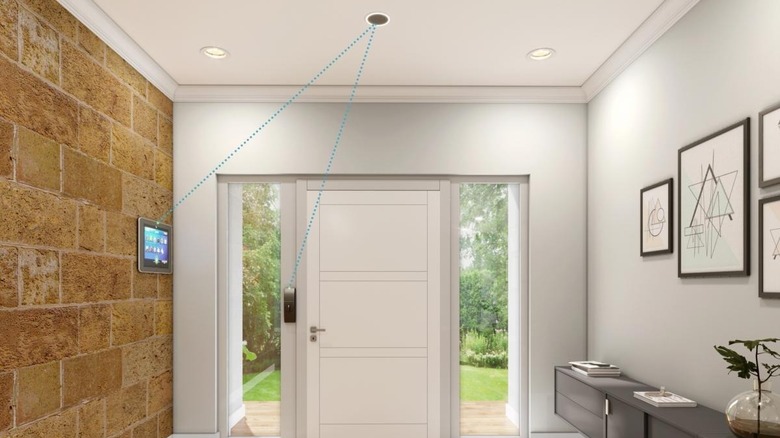Belkin's New Wireless Chargers Could Work From All The Way Across The Room
Belkin, the American consumer electronics brand known for its connectivity devices and computer peripherals, could soon become the first consumer electronics brand to launch products that support truly wireless, over-the-air charging. On April 27, 2022, Belkin announced a partnership with Wi-Charge, an Israeli long-range wireless power company that is focused on making truly wireless charging a reality soon.
We do not have specific details about Belkin products that shall support this new charging standard, and the company does not specify a timeline for the launch of these products either. However, Belkin appears to be pretty bullish on the future of true wireless charging, and the company's CEO anticipates over-the-air wireless charging to become commonplace in the years to come. Given the current popularity of wireless charging solutions, the statement does make sense.
For those unaware, Wi-Charge's infrared-based over-the-air wireless charging solution claims to charge supported devices without the need for them to be connected to a wireless charging dock. In addition, the company says its charging solution is safe, eco-friendly, easy to deploy, and has all necessary regulatory approvals already in place.
How does Wi-Charge wireless charging work?
Wi-Charge's wireless charging standard converts electrical energy into infrared beams. These beams are then sent to compatible products using a wireless power transmitter that is positioned at a centrally placed location (a ceiling, for example). When a compatible recipient device enters the room, the receiver on that device accepts the infrared signal from the transmitter. This infrared signal is converted back into electrical energy which is then used to wirelessly charge the device.
Wi-Charge — which has been perfecting this technology for several years now — says that its transmitters can automatically detect compatible devices in a room and begin charging the devices without user input. The receiver designed by Wi-Charge shares the battery status and usage stats of the recipient device to ensure it receives the right amount of power and to ensure that the charging is automatically stopped when the battery level reaches 100%.
Apart from using this technology at home to wirelessly charge a wide variety of devices, Wi-Charge also estimates that the technology could also see widespread adoption in public places.
What's the future of over the air wireless charging?
While it would be a while before we see this technology becoming commonplace on smartphones and devices that tend to be very mobile, in its current state, this looks like a perfect charging solution for stationary gadgets. For example, this technology can be used to charge devices like a gaming console, or a wireless router — both of which typically sit at one designated location in a room.
In supermarkets, it can be used to wirelessly power digital displays and smart doors. With a current range of 40 feet, supported devices don't need to be placed in close proximity to the wireless transmitter. They will need to be in a direct line of sight, though.
Wi-Charge is not the only company working on developing an over-the-air wireless charging solution. Last year we saw Chinese smartphone major Xiaomi announce a new technology called Mi AirCharge. That product, however, was in the very early stages of its development, and we haven't heard anything additional about that ever since. This is in contrast with Wi-Charge's current efforts that not only look plausible, but the company says it has already deployed the technology in several commercial spaces.


